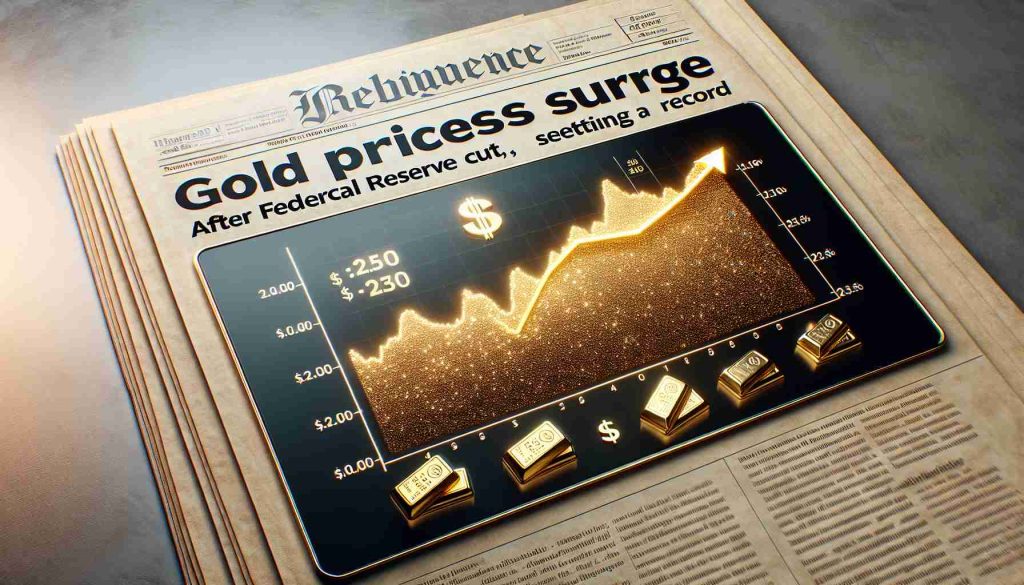Gold prices saw a remarkable surge after the US central bank announced a rate cut, hitting a new all-time high. The price of gold reached an unprecedented level of excitement in the market, spiking up to $2,600 per ounce shortly after the Federal Reserve’s decision. However, the euphoria was short-lived as the prices quickly retreated to $2,555, erasing the initial gains.
Despite the temporary setback, the overall trend for gold remains bullish. With a year-to-date increase of over 25%, gold continues to outperform major benchmarks such as the S&P 500 index. The recent interest rate cut by the Federal Reserve, while causing a momentary sell-off, is generally viewed positively for gold. Lower interest rates lower the opportunity cost of holding non-yielding assets like gold, shifting the attractiveness away from traditional income-generating instruments.
Investors and traders alike may have engaged in a classic “buy the rumor, sell the news” strategy, which led to the quick reversal in gold prices. The precious metal’s intrinsic value lies in its safe-haven status and lack of correlation to traditional financial assets. Despite the fluctuations, the long-term outlook for gold remains positive as economic uncertainties persist, driving investors towards alternative assets like gold for stability and long-term growth potential.
The Impact of Gold Prices Surge Amid Federal Reserve Cut
Following the Federal Reserve’s decision to cut interest rates, gold prices experienced a significant surge, reaching record-breaking levels of $2,600 per ounce before a slight retreat to $2,555. While the initial excitement was palpable, the broader implications of this surge raise key questions and considerations.
Key Questions:
1. What factors influenced the unprecedented rise in gold prices?
The Federal Reserve’s rate cut undoubtedly played a pivotal role in boosting gold’s appeal as a safe-haven asset. Additionally, escalating global uncertainties and currency fluctuations have further contributed to the surge.
2. How sustainable is the current upward trend in gold prices?
While the recent spike reflects immediate market reactions, ongoing economic uncertainties and geopolitical tensions suggest continued demand for gold as a hedge against volatility, potentially supporting a sustained upward trajectory.
Key Challenges and Controversies:
1. Market Volatility:
The rapid fluctuations in gold prices following the Federal Reserve’s actions underscore the challenges of navigating a volatile market environment, raising concerns about short-term investor behavior and potential price manipulation.
2. Policy Impact:
The Federal Reserve’s interventions, such as interest rate adjustments, have a direct impact on gold prices, leading to debates about the efficacy of such policies in driving market stability and economic growth.
Advantages:
1. Diversification:
Gold offers investors a diversification tool to mitigate risks associated with traditional assets, making it a valuable component of a well-rounded investment portfolio.
2. Hedge Against Inflation:
Historically, gold has served as a hedge against inflation, preserving purchasing power and providing a sense of stability in times of economic uncertainty.
Disadvantages:
1. Price Volatility:
The inherent volatility of gold prices can pose challenges for investors seeking steady returns, requiring a strategic approach to capitalizing on opportunities while managing risks effectively.
2. Storage and Security Costs:
Investing in physical gold entails additional costs related to storage and security, which can erode returns and add complexity to the investment process.
For further insights on gold prices and market dynamics, visit Bloomberg or Investopedia.
